Garden Safety Tips UK: Keep Your Green Space Secure
Gardening can be an incredibly rewarding hobby, bringing both physical and mental benefits. Whether you’re planting flowers, growing vegetables, or just enjoying the outdoors, it’s important to do so safely. How can you enjoy your garden without risking injury or health problems?

By following some essential tips, you can make sure that your gardening activities remain a pleasant experience. This article will guide you through some practical measures to help you stay safe while making the most of your outdoor space.
1) Install Secure Fencing
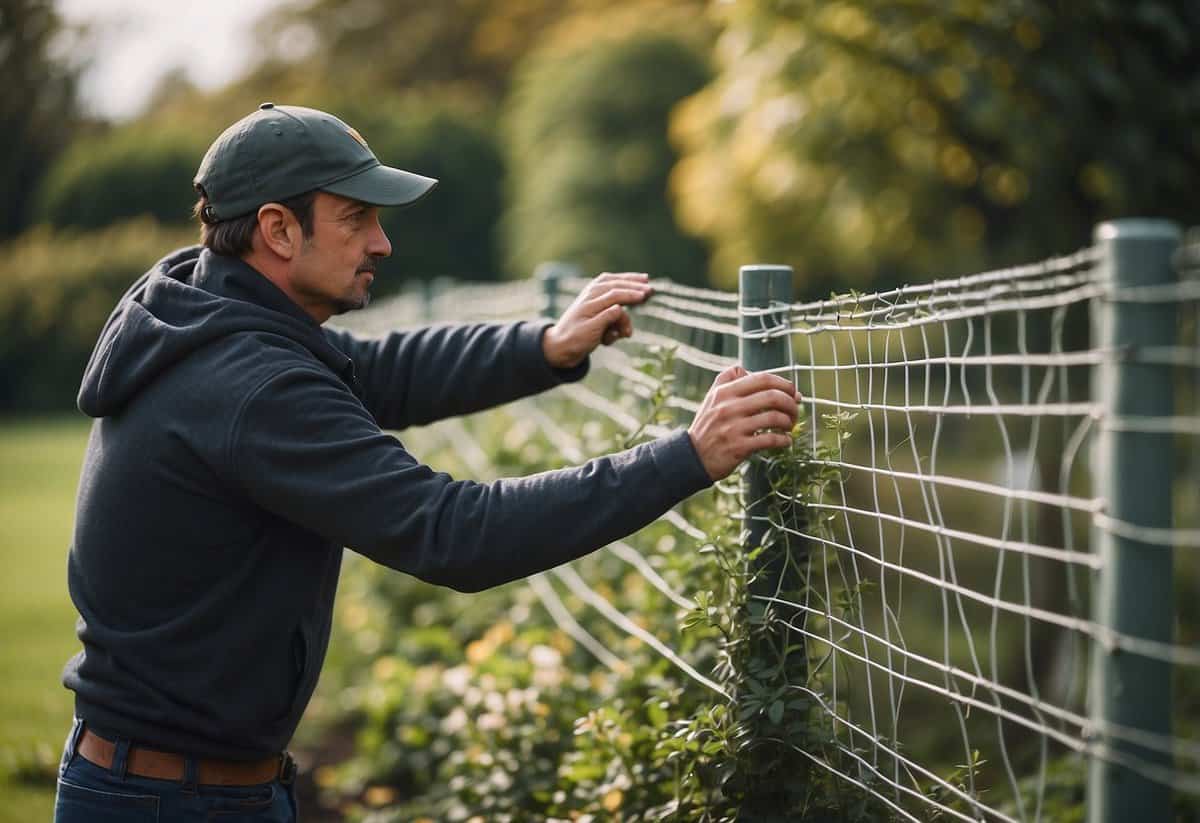
Adding secure fencing is one of the best ways to protect your garden. A sturdy fence around the perimeter helps keep out both intruders and wildlife.
Choose a fence that is at least 2 meters tall. You might need planning permission if it’s taller. Anti-climb spikes can make it even harder to breach.
Decorative options like trellising on top not only look good but add extra security. Make sure to check with your local regulations before making any changes.
For more tips, DIY Garden shares some useful advice that you can follow.
2) Lock Away Tools
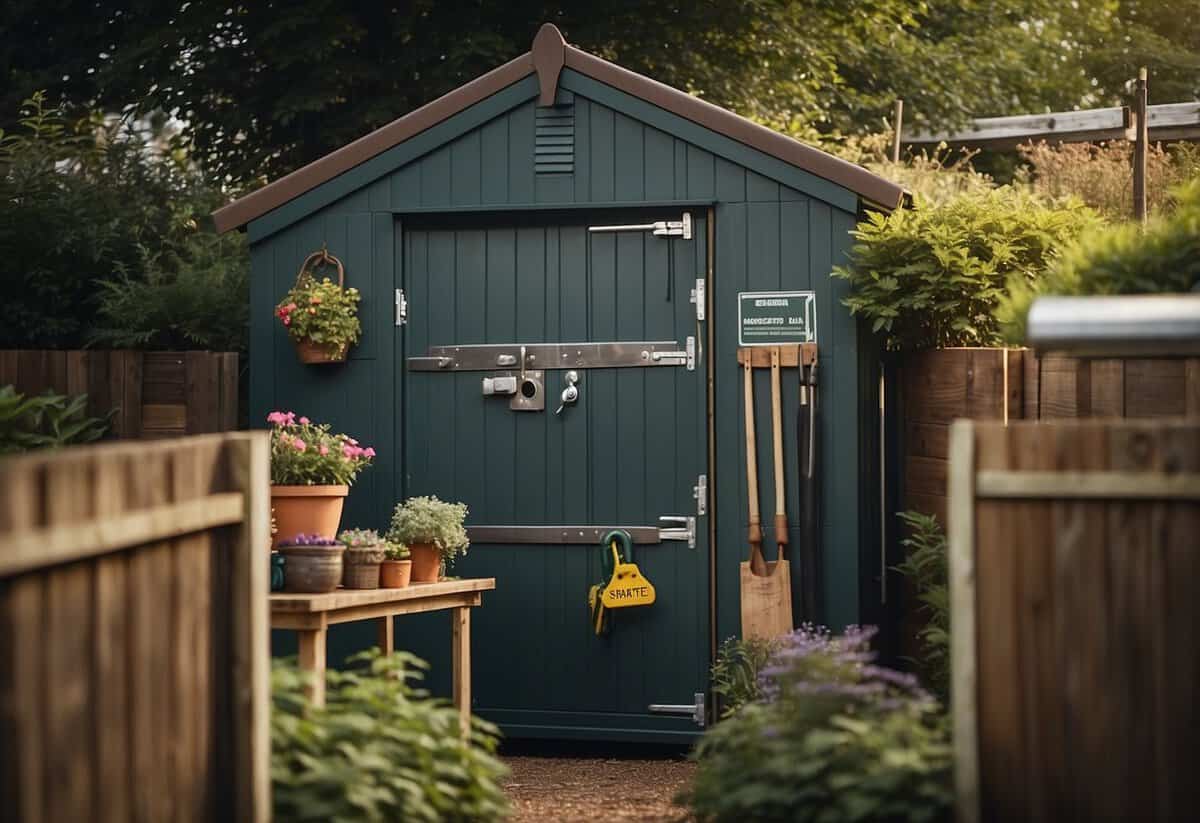
Keeping your garden tools secure is important. Always lock your tools in a sturdy shed or garage.
Consider adding a shed alarm for extra security. This can alert you if someone tries to break in.
Secure the doors with strong bolts and padlocks. This makes it harder for thieves to get inside and take your equipment.
Remember, taking these steps helps keep your garden safe and your tools where they belong.
3) Use Safe Garden Chemicals
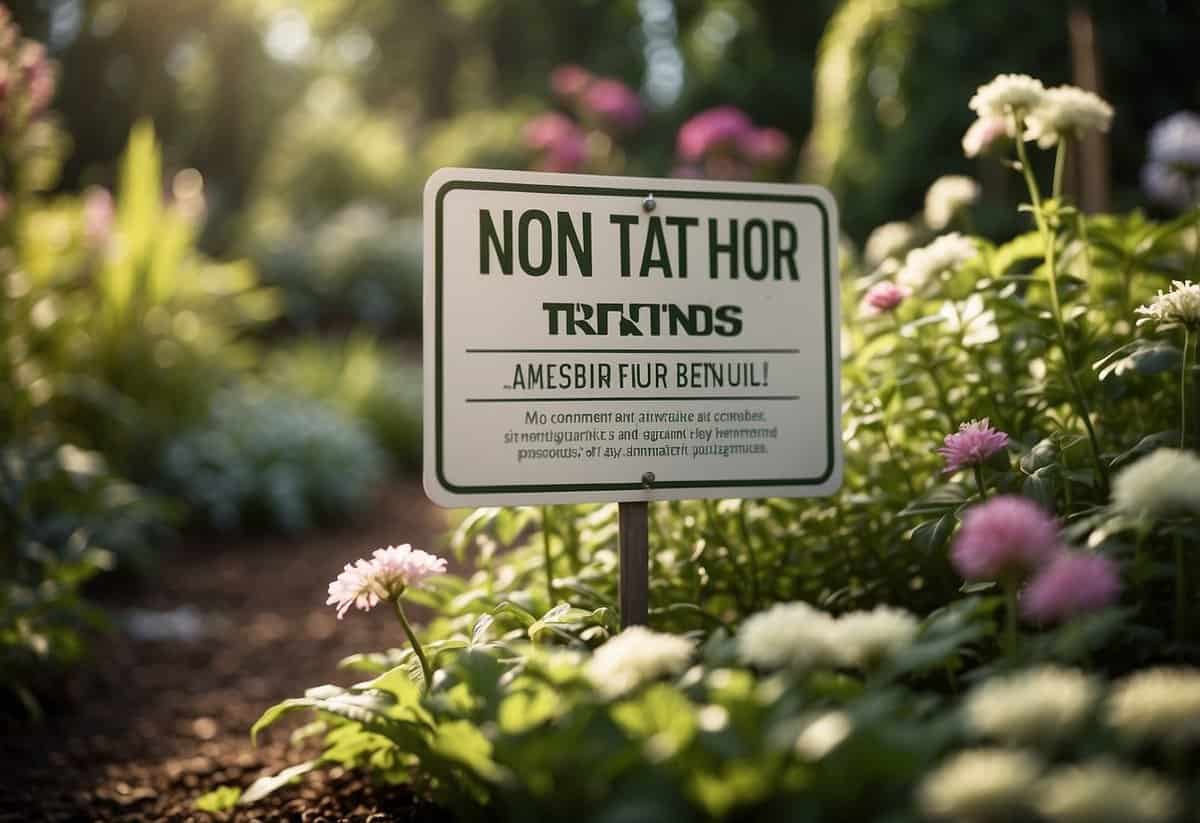
When using chemicals in your garden, always follow the instructions on the label. This ensures you use the right amount and apply it safely.
Wear protective gear like gloves, masks, and goggles. This keeps harmful substances off your skin and out of your lungs.
Consider using alternative methods to control pests and diseases. Neem oil and homemade sprays can be effective and safer for you and the environment.
4) Provide Adequate Lighting

Good lighting in your garden is essential for safety. It helps you navigate paths and steps more easily. Plus, it deters intruders.
Use GFCI outlets to prevent electrical hazards. Make sure to switch off the power supply before installing new lights.
Proper illumination helps you enjoy your outdoor space even after dark. Consider using low-voltage lights for ease and safety.
5) Maintain Pathways
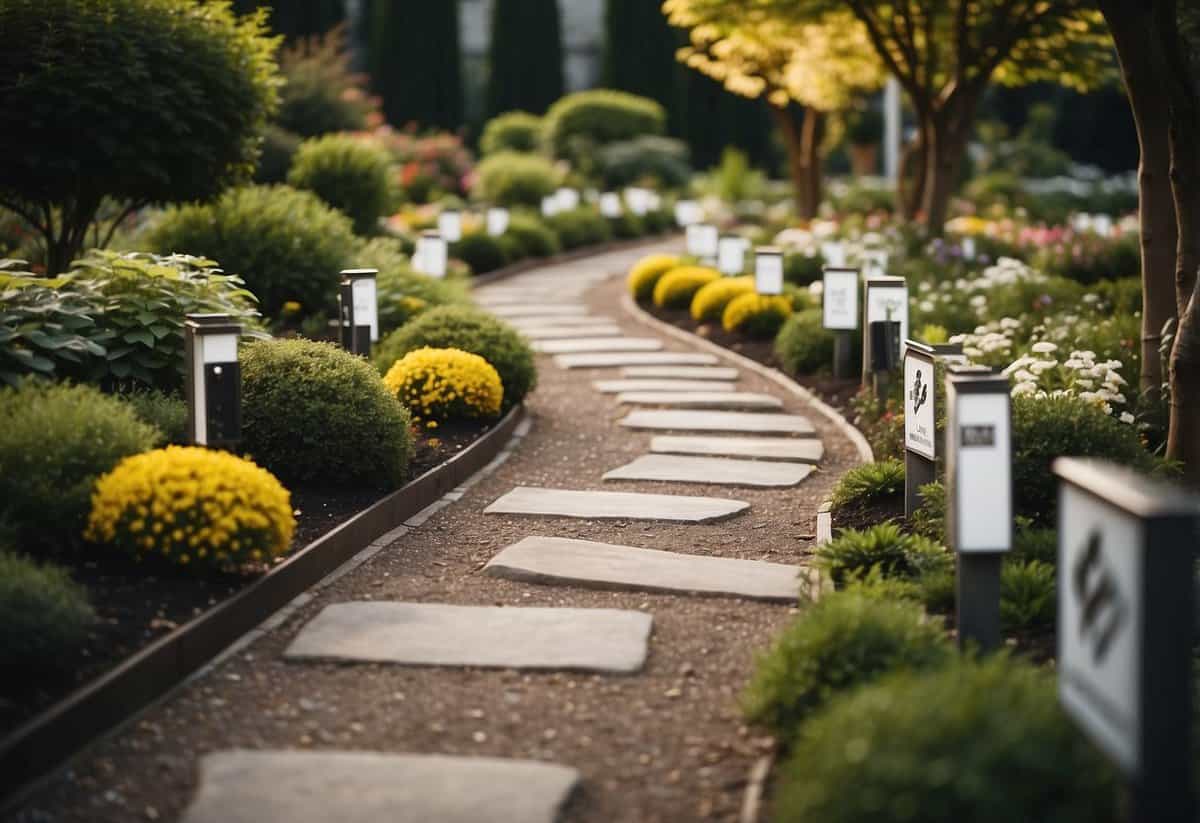
Keeping your garden pathways clean and safe is important. Sweep them frequently to remove dirt and debris. Regular maintenance prevents accidents and keeps your garden looking tidy.
Use a scrubbing brush with warm water and dish soap for smaller paths. For larger areas, consider using a pressure washer to remove stubborn dirt and algae. This helps reduce slippery surfaces and keeps your garden inviting.
Regularly check for and fix any loose or uneven parts of the path. This ensures safety and prevents trips and falls, especially in wet weather. Always maintain your garden paths properly for the best results.
6) Child-Proof Ponds
Making your pond safe for children is important.
A popular method is to install a secure grid over the pond. The grid should be strong enough to support the weight of a child.
Another option is to use a safety fence around the pond. Make sure it is high enough so children can’t climb over it.
You can also grow plants around the deeper parts of the pond to deter children from getting close. Remember to keep visibility clear.
7) Use Safe Garden Furniture

When choosing garden furniture, safety should be a priority. Opt for sturdy materials like metal or wood. Avoid lightweight plastic that can easily tip over.
Make sure your furniture is in good condition. Check for rust, loose screws, or broken parts. Regular maintenance is key.
Fix your furniture to the ground using anchors or chains, especially if your area is windy. This helps prevent accidents and theft. Secure cushions and covers to avoid them blowing away, which can also be a fire hazard during hot weather.
8) Trim Overgrown Trees

Trim any overgrown trees in your garden to keep your space safe and tidy. Overgrown branches can cause damage during storms or high winds.
Use a proper pruning saw for large branches and make sure your tools are sharp. Safety is very important. Always wear gloves, safety glasses, and a helmet.
You have the right to trim branches that overhang into your property, but don’t trespass onto your neighbor’s land. For more details, visit this helpful guide on trimming overhanging branches.
9) Store Chemicals Safely
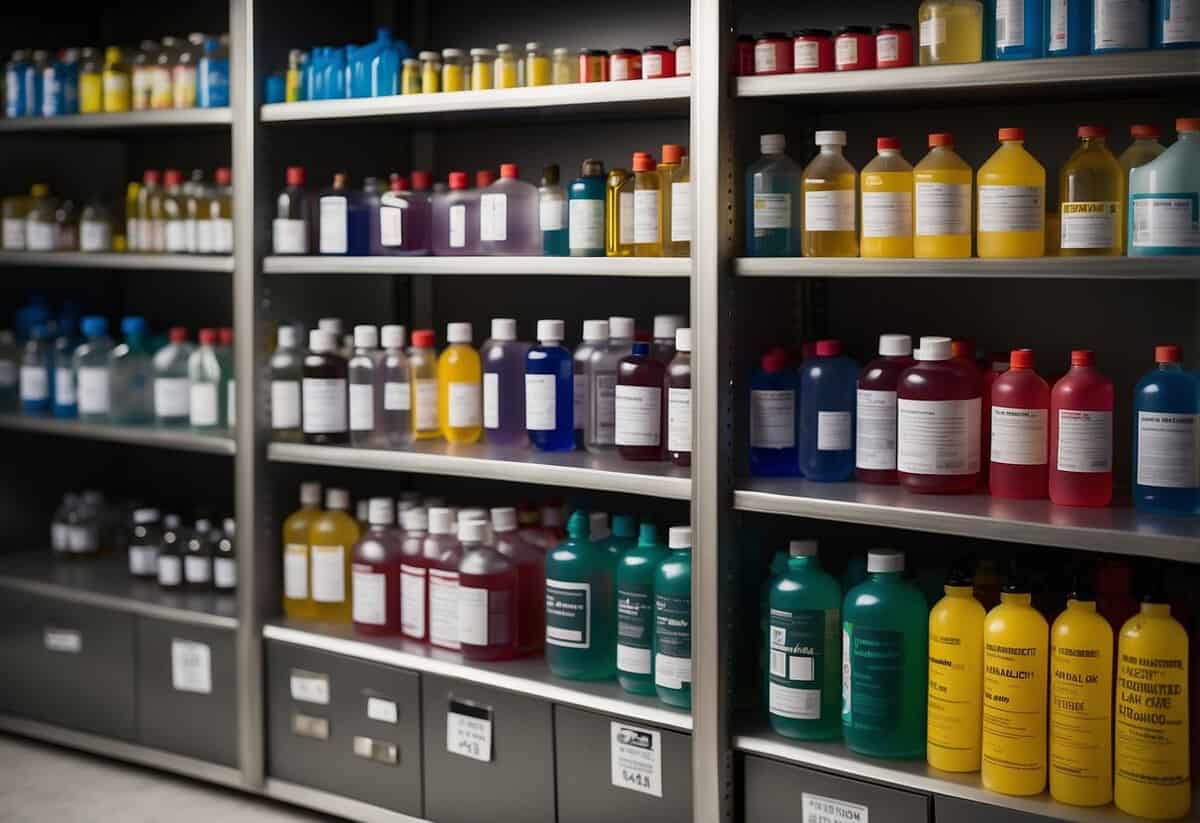
Always keep gardening chemicals in their original containers. This helps you avoid confusion about the contents and ensures you have all the safety information handy.
Store these containers in a cool, dry place, out of direct sunlight. This helps maintain their effectiveness and reduces risk.
Keep chemicals out of reach of children and pets. A locked cabinet or high shelf is best for safety. For more tips on safe storage, visit RHS Gardening.
10) Create Non-Slip Surfaces

Keeping your garden safe includes making sure surfaces aren’t slippery. After cleaning, applying a sealer to wood or stone can help. Adding gripping strips or abrasive decking tape provides extra traction. For a more permanent solution, use grip strips that you can screw into place. This will help keep paths and decks safe, even when it’s wet.
Understanding Garden Hazards

Gardening is a wonderful activity, but it’s important to be aware of potential hazards. By knowing the common dangers and identifying hazardous plants, you can garden safely and enjoyably.
Common Garden Dangers
Gardening can expose you to various risks. One major risk is physical injury. Tools like shears and spades can cause cuts or scrapes. Always use them carefully and consider wearing gloves. Slippery surfaces such as wet grass or paths can lead to falls. Proper footwear with good grip can help prevent accidents.
Infections can also be a concern. Soil and compost may contain harmful bacteria like Legionella longbeachae. This bacterium can cause Legionellosis, particularly in older adults or those with weak immune systems. Wearing masks when handling soil or compost can reduce this risk.
Exposure to the sun is another hazard. Prolonged time outdoors can lead to sunburn or heatstroke. Wearing sunscreen, hats, and staying hydrated are easy ways to protect yourself from the sun’s dangerous rays.
Identifying Hazardous Plants
Not all plants in your garden are safe. Some can pose serious risks. For instance, certain plants are toxic if ingested or can cause skin irritation. Foxgloves and oleanders are good examples. Educate yourself on which plants in your garden might be hazardous.
In addition, be cautious with plants that attract pests. Plants with fragrant flowers or brightly colored blooms can attract bees and wasps, leading to potential stings. If you’re allergic, this can be particularly dangerous.
Also, some plants can cause severe allergic reactions. Poison ivy, poison oak, and certain sap-producing plants can result in itchy rashes. Wearing long sleeves and using barrier creams can help minimize contact with these plants.
For more detailed information, refer to resources like the Royal Horticultural Society which provides in-depth advice on garden safety.
Safe Gardening Practices

Proper safety measures can make gardening a safer and more enjoyable activity. Key practices include wearing appropriate protective gear and using gardening tools correctly.
Protective Gear for Gardeners
Wearing the right clothing and protective gear is essential for staying safe while gardening. Gloves are a must to protect your hands from thorns, sharp tools, and harmful substances. Long sleeves and pants can help prevent skin irritations from plants and insect bites.
Safety goggles or visors shield your eyes from debris when pruning or trimming plants. A hat or cap can provide extra protection from the sun, reducing the risk of sunburn. Sturdy footwear with good grip keeps your feet safe from accidental injuries with tools or heavy objects.
For additional protection, consider using knee pads while working on your knees to prevent pain and bruises. Applying sunscreen regularly can also protect your skin from harmful UV rays.
Safe Use of Gardening Tools
Gardening tools must be used with caution to prevent accidents. Always select the right tool for the task to reduce the risk of injury. Keep tools sharp and in good condition, as dull tools can slip and cause cuts. When not in use, store tools safely out of the reach of children.
Read and follow the manufacturer’s instructions for any equipment you use. When using electric tools, ensure they are properly grounded to avoid electric shocks. Regularly inspect tools for damage or wear and replace any faulty equipment promptly.
Always carry tools with the sharp side facing down and away from your body. When digging or using a shovel, be mindful of where you place your hands and feet to avoid accidental strikes.
Child and Pet Safety

When it comes to keeping children and pets safe in your garden, it’s crucial to create secure play areas and steer clear of toxic plants. Follow these tips to ensure a hazard-free space for your little ones and furry friends.
Creating a Safe Play Area
Designate a specific area in your garden where children and pets can play safely. Make sure the area is free from sharp tools and holes. Climbing frames should be placed on firm, level ground and anchored to reduce the risk of tipping. Leave unobstructed space around the play equipment to prevent accidents.
Fencing can provide an extra layer of safety. Use fencing to create boundaries and prevent pets from wandering into dangerous zones. Always supervise children around water features. Babies and toddlers can drown in just 5cm (2 inches) of water. Consider emptying paddling pools after use.
Regularly check play equipment for wear and tear. Monthly inspections can help you identify potential hazards early. Removal of animal waste from play areas is essential to prevent toxoplasmosis.
Avoiding Toxic Plants
Certain plants can be harmful if ingested by children or pets. Be aware of common toxic plants like foxglove, yew, and oleander. Research before adding new plants to your garden.
Create barriers around toxic plants or consider replacing them with safer alternatives. For example, you might swap out foxglove for sunflowers or yew for rosemary. If you can’t remove the plants, place warning signs to alert visitors of potential dangers.
Supervise your children and pets, especially in areas with known toxic plants. Teaching older kids about plant dangers can also help. Pets, particularly dogs, may need training to stay away from certain plants.







